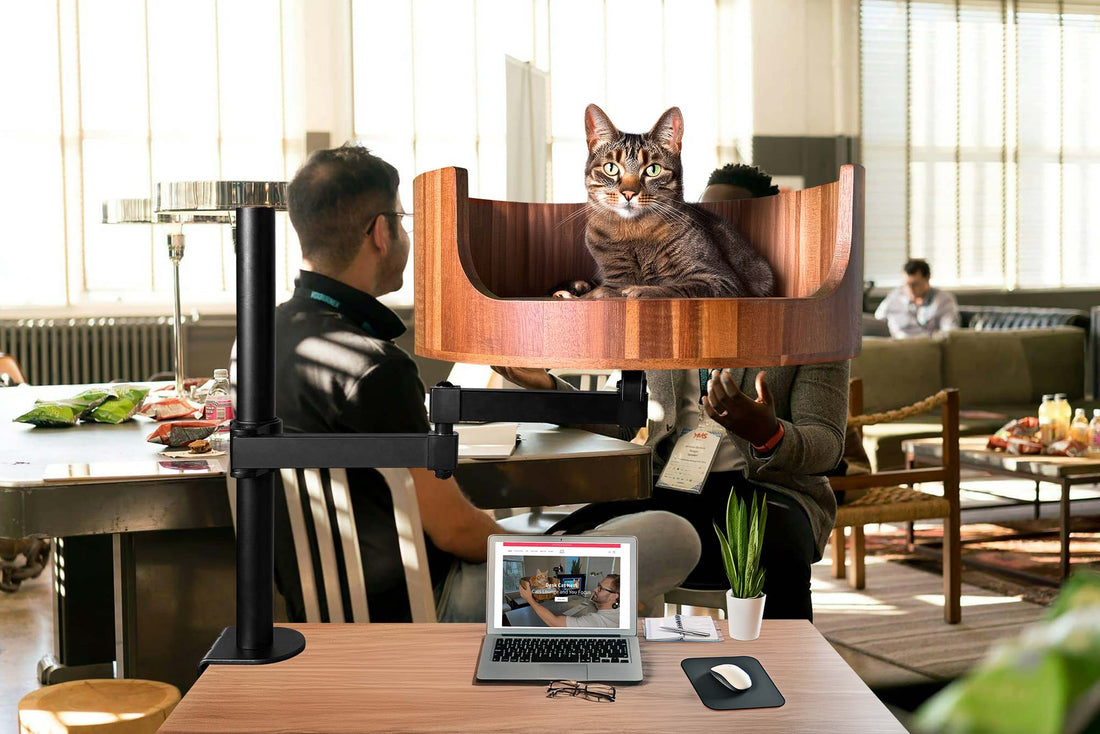
My Cat Doesn't Meow: Understanding Feline Communication
Share
Are you puzzled by your cat's silent behavior? While most felines are known for their vocalizations, some cats are surprisingly quiet. This article aims to delve into the world of feline communication and help you decipher your cat's unique behaviors, particularly when they don't meow.
Desk Cat Nest, a popular cat behavior blog, has gathered insightful information from experts in the field to shed light on the various ways cats communicate without using their voices. From body language to facial expressions, cats have a myriad of ways to convey their emotions and needs to their owners. Understanding these subtle cues can deepen the bond between you and your furry companion while also providing essential insights into their well-being. In this article, we will explore the reasons why some cats may not meow, as well as tips on how to better understand and respond to your cat's non-verbal communication cues.
1. Cats have a wide range of vocalizations beyond just meowing, including purring, chirping, and hissing, each with its own meaning.
2. Understanding a cat's body language, such as ear position, tail movement, and eye contact, is crucial for interpreting their feelings and intentions.
3. By observing and learning your cat's individual communication style, you can deepen your bond and strengthen your relationship with your furry friend.
4. Providing a comfortable and safe environment for your cat, including a quiet space for rest and play, can help reduce stress and promote healthy communication.
5. Regular veterinary check-ups and proper nutrition are essential for maintaining your cat's overall well-being and ensuring they can communicate effectively with you.
Understanding Feline Communication
Cats have a complex system of communication that goes beyond just meowing. Understanding feline communication involves recognizing a variety of vocalizations, body language, and behaviors that convey different messages. While some cats may not meow frequently or at all, they still communicate effectively through other means.
Types of Communication in Cats
When it comes to communication, cats rely on a blend of vocalizations, body language, and behavior. Some common vocalizations include meowing, purring, hissing, and growling. Body language cues like tail position, ear movement, and eye contact can also provide insight into a cat's feelings or intentions. In addition, cats use behaviors such as kneading, grooming, and rubbing to communicate with others.
Reasons Why Cats Don't Meow
There could be several reasons why a cat doesn't meow as often as others. Some cats may be naturally quieter or less vocal than others. Certain breeds, like the Maine Coon, are known to be more silent compared to breeds like the Siamese, which are notoriously chatty. Health issues, stress, or anxiety can also impact a cat's vocalizations. It's important to monitor changes in your cat's behavior and consult with a veterinarian if necessary.
Alternative Forms of Feline Communication
Even if your cat doesn't meow, they are likely communicating with you in other ways. Pay attention to your cat's body language, facial expressions, and behaviors to understand their needs and emotions. Some cats may use purring or chirping instead of meowing. Others may communicate through subtle cues like tail flicking or ear flattening. Building a strong bond with your cat and observing their unique communication style can help strengthen your relationship.
Desk Cat Nest FAQ
Why isn't my cat meowing?
There could be several reasons why your cat isn't meowing. It is possible that they are not feeling well, are stressed, or simply not in the mood to vocalize. It is always best to consult with a veterinarian if you notice any significant changes in your cat's behavior.
How can the Desk Cat Nest help my non-meowing cat?
The Desk Cat Nest provides a cozy and secure space for your cat to relax and feel safe. By creating a comfortable environment, your cat may become more relaxed and open to vocalizing. Additionally, the Desk Cat Nest can provide a sense of ownership and territory for your cat, which may encourage them to meow more frequently.
Will the Desk Cat Nest make my cat meow excessively?
While the Desk Cat Nest can create a comfortable space for your cat to vocalize, it is important to pay attention to your cat's natural behavior. If your cat starts meowing excessively, it may be a sign of stress or discomfort. Monitor your cat's behavior and consult with a veterinarian if needed.
Can the Desk Cat Nest be used for cats of all sizes?
The Desk Cat Nest is designed to accommodate cats of various sizes. The size and shape of the nest provide a comfortable space for cats to curl up and relax. However, it is always best to monitor your cat's comfort level and behavior to ensure they are happy and content in the nest.
How do I encourage my cat to use the Desk Cat Nest?
To encourage your cat to use the Desk Cat Nest, you can place familiar bedding or toys inside the nest to make it more inviting. You can also try placing the nest in a quiet and cozy area where your cat likes to relax. Additionally, spending time with your cat near the nest can help them feel more comfortable and secure in the space.
In conclusion, the Desk Cat Bed is a valuable choice for cats that don't meow as it provides a cozy and comfortable space for them to rest and feel secure. By offering a designated area for your cat to relax and unwind, this bed can help reduce stress and anxiety, leading to a happier and healthier feline companion. Additionally, the raised design of the Desk Cat Bed can also encourage your cat to communicate more effectively, potentially leading to more vocalizations and meowing. Overall, investing in a Desk Cat Bed is a wise choice for pet owners looking to improve their cat's overall well-being and communication habits.



















































